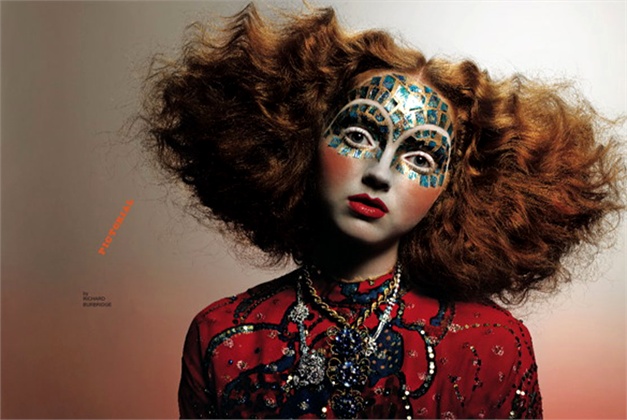Originally
small Greek colonies of Byzantium and of modern Istanbul, its imperial court
have always presented an endless source of inspiration for the fashion industry,
which is Constantinople.
The imperial court was renowned for the adornment of its halls and the clothes
and jewelry worn by the emperor and the empress in public ceremonies.
Garments had strong social implication in the Byzantine Empire. Colors
varied according to the social status of the wearer; purple, for example, was a
privilege of the imperial family.
Many
designers devoted entire collections to the influential empress wrapped in a
long gold embroidered crimson purple cloak, a diadem on her head and the hair
braided with ornaments embellished with valuable gems and pearls.
Romeo
Gigli was inspired by the empress when he created his first collection
showing in Paris, the F/W 1989/90 collection suitably entitled “Teodora”. Gigli’s
collection was the result of a detailed research through the history of costume
that recreated the Byzantine atmosphere thanks to garments designed following the
dressmaking traditions of that period.
Gigli drew on those same shapes, fabrics, decorative elements and
embroideries and gave them a contemporary appeal. His muse was a woman clad in long draped
coats embroidered with gold and beads enveloping the body in a graceful 3D effect. The prevailing color was crimson violet, the
imperial color par excellence. Accessories – earrings, bracelets and necklaces
– were authentic replicas of those worn by Empress Theodora.
Byzantium and Theodora inspired garments and colors feature
heavily also in Chanel collections. And with the Paris-Byzance pre-fall 2012 collection the reference became
unequivocal. The show
was accompanied by the release of a book which comprises some photos of the
well-known Ravenna mosaics taken by Karl Lagerfeld. Compared to Romeo Gigli’s creations, in the Chanel collection the
reference was not so much to the structure of the Byzantine garment but was
rather concerned with the ornaments. The focus was on details, colours and
accessories. While the lines and shapes of the garments remained faithful to
the signature codes of the Maison. Walking down the runway were modern “Theodoras”
flaunting lavishly embellished garments that exuded majesty and opulence. Green, violet and purple dominated the
collection although
what truly attracted the attention were the beads and stones decorating the
clothes and the model’s hair. From the invitation card to the hairstyles, from
make-up to the decor that transformed Chanel headquarters in rue Cambon in an
imperial palace, nothing was left to chance.
The collections by Gigli and
Chanel represent an explicit reference – and tribute – to the style of
Byzantium, an empire that is undoubtedly far away in time but whose allure is
still very relevant. The East seen through the eyes of Western fashion.



0 comments:
Post a Comment